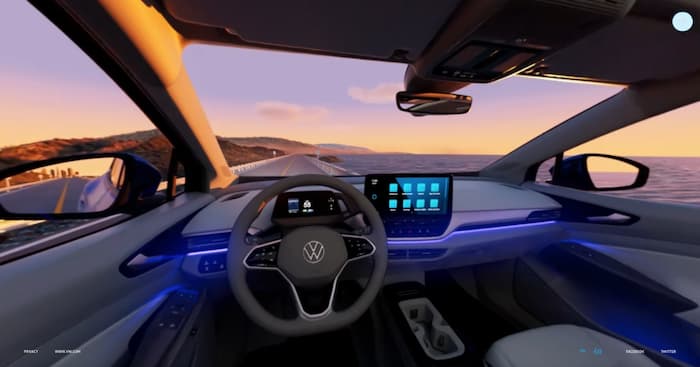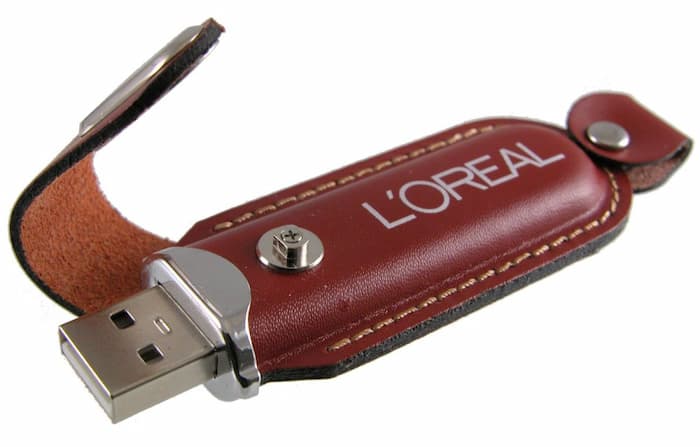
3 October, 2024
Case Studies: Unleashing the Power of USB Drives in Marketing
In an age where digital reigns supreme, USB drives have emerged as more than just storage devices; they're powerful tools in the arsenal of innovative marketing. Companies across various industries have harnessed their unique capabilities to drive their marketing campaigns to new heights. Let’s plug into some remarkable case studies where they were not just giveaways but game-changers.
1. IBM's "Paper" USB Drive Campaign: A Green Revolution in Tech Marketing
IBM, recognised globally for its technological prowess, faced a unique challenge: effectively communicating their commitment to environmental sustainability. In an industry often criticised for e-waste and energy consumption, they needed to walk the talk in a way that resonated with their audience.
The Innovative Strategy
In a stroke of eco-friendly genius, IBM unveiled the "Paper" USB drive as the centrepiece of their direct mail campaign.
Biodegradable Brilliance: The USB drive was crafted from biodegradable materials, primarily paper. This choice was both symbolic and practical, showcasing IBM's investment in environmentally responsible solutions.
Content is King: The USB wasn’t just about its unique material; it was a vessel for a message. Pre-loaded with detailed insights into IBM's green initiatives, it offered recipients a deep dive into the company's eco-friendly projects and goals.
Direct Mail with a Difference: By choosing direct mail, IBM ensured a personal touch. The paper USB drive, arriving in mailboxes, was a far cry from the typical email blast, standing out in its tangibility and novelty.
The Impact: More Than Just a Campaign
Eco-Friendly Message: The campaign struck a chord in terms of environmental responsibility. The paper-based design wasn't just a promotional tool; it was a testament to IBM’s serious stance on sustainability.
Engagement Skyrockets: The unique nature of it piqued interest. Recipients were intrigued by its design, leading to a higher engagement level with the content. It wasn’t just another promotional item - it was a conversation starter.
Brand Image Elevated: This campaign bolstered IBM’s image as an innovator, not just in technology, but in its approach to global challenges like sustainability. It positioned IBM as a company that not only talks about eco-friendliness but also integrates it into its marketing and product strategies.
Conclusion: IBM's Lesson in Green Marketing
IBM's paper USB drive campaign is a case study in innovative, eco-conscious marketing. It shows how a well-thought-out marketing strategy can align with a company's core values and resonate with its audience. By blending technology with sustainability, IBM not only communicated its environmental commitments but also reinforced its reputation as a forward-thinking, responsible leader in the tech world. This campaign serves as a benchmark for companies looking to marry innovative marketing with environmental responsibility.

2. Volkswagen's Test Drive USB: Revolutionizing Car Marketing
Volkswagen, a powerhouse in the automotive industry, embraced the digital revolution in a unique way to market their new car models. Recognising the changing landscape of customer engagement, they decided to bring the test drive experience directly into the hands of potential customers.
The Cutting-Edge Strategy
Virtual Test Drive on a USB: Volkswagen ingeniously used custom metal USB flash drives pre-loaded with a virtual test drive program. These weren’t just ordinary flash drives; they were keys to a digital experience of Volkswagen’s latest models.
Engaging Multimedia Content: They contained interactive videos and detailed simulations, allowing customers to virtually 'sit' in the new models, explore their features, and get a feel for the car, all from their computer or tablet.
Bridging Digital and Physical Worlds: By blending the digital realm with the physical experience of a car dealership, Volkswagen created a holistic marketing strategy that reached customers on multiple levels.
The Impact: Driving Sales into the Future
Enhanced Experience: The USB drives transformed the traditional test drive into a cutting-edge, immersive experience. Customers could explore the new models in a comprehensive, engaging way, making the digital test drive memorable and impactful.
Buzz and Interest: This innovative approach generated significant buzz. People talked about the unique marketing tactic, and the excitement translated into increased curiosity about Volkswagen’s new models.
Boost in Showroom Visits: The virtual test drive experience piqued interest, leading to more people visiting showrooms to experience the cars in person. This blend of digital engagement and physical interaction proved to be a powerful sales tool.
Sales Surge: Ultimately, Volkswagen’s digital test drive campaign translated into tangible results - a notable uptick in sales. The campaign didn’t just introduce a new model; it redefined the car-buying journey, making it more accessible, convenient, and engaging.
Conclusion: Volkswagen's USB Innovation
Volkswagen’s Test Drive USB campaign showcases how a traditional industry can innovate with digital tools to enhance customer engagement and drive sales. By embracing technology, Volkswagen not only introduced its new models but also reimagined the entire process of car buying and marketing. This campaign stands as a testament to the power of digital transformation in marketing, proving that even the most established industries can find new roads to success in the digital age.

3. Microsoft's Windows 7 Launch: USB Drives as Catalysts for Change
When Microsoft was gearing up to launch Windows 7, they recognised the need for an innovative approach to software distribution. In a move that blended technological practicality with marketing savvy, they turned to USB drives. This might be an older example now, but it shows how innovation can cut through the noise.
The Forward-Thinking Strategy
USB Drives Over Traditional CDs: Breaking away from the conventional CD-ROM distribution, Microsoft chose USB drives for the task. These drives were pre-loaded with Windows 7, ready for immediate installation.
Targeting Key Players: They were distributed to a select group of influencers and journalists in the tech world. This strategy wasn’t just about distribution; it was about creating buzz and building anticipation.
Ease of Access and Sharing: The use of USB flash drives meant that the installation of Windows 7 was not only faster but also more accessible, particularly for newer laptops and netbooks that were ditching CD drives.
The Impact: A USB-Driven Success
Simplified Installation Process: One of the biggest triumphs of using them was the ease with which users could install Windows 7. It was a plug-and-play affair – simple, quick, and efficient.
Broadening Reach: By placing Windows 7 directly into the hands of influential tech personalities, Microsoft ensured that the OS received extensive coverage and reviews. It was a smart move that leveraged the power of word-of-mouth in the digital age.
Winning Reception: The convenience of them was highly appreciated by recipients. It showed Microsoft's commitment to user experience and adaptability, marking Windows 7's launch as a success. Users appreciated the modern approach to software installation, aligning with the evolving tech landscape.
Boost in Adoption Rates: The buzz created by this unique distribution method, coupled with positive reviews, contributed to a successful launch. Users were intrigued and impressed, leading to a healthy adoption rate of the new operating system.
Conclusion: Microsoft's Innovative Leap
Microsoft's use of them for the Windows 7 launch was more than just a distribution strategy; it was a statement of innovation and user-centric thinking. By stepping away from traditional methods and embracing a more modern, practical approach, Microsoft set a precedent in software distribution. This move not only facilitated the spread of Windows 7 but also positioned Microsoft as a forward-thinking, adaptable player in the tech world. The launch remains a stellar example of how technology and marketing can come together to create a successful and memorable product rollout.

4. L'Oréal's Fusion of Beauty and Technology: The USB Drive Press Kit
L'Oréal, a titan in the beauty and cosmetics industry, embraced technology to launch their new skincare line. Their tool of choice? USB drives, a seemingly unassuming gadget that proved to be a powerhouse in their marketing strategy.
The Innovative Strategy
USB Drives as Digital Press Kits: L'Oréal chose to eschew traditional paper press kits in favor of USB drives. These were not just storage devices but were transformed into a portal of information and visual appeal.
Content is Queen: The drives were loaded with high-quality images, detailed product information, and engaging promotional videos. This digital press kit was designed to offer an immersive experience into L'Oréal's new skincare line.
Direct to the Beauty Elite: They were distributed to a carefully selected group of beauty bloggers and journalists – individuals who wield considerable influence in the beauty industry.
The Impact: A Campaign That Resonated
Rich Content Delivery: The use of them enabled L'Oréal to deliver content-rich media directly into the hands of those who matter. This strategy ensured that the information was not just received but experienced.
Enhanced Brand Engagement: The recipients had immediate and convenient access to a treasure trove of information. This accessibility led to more detailed, informed, and enthusiastic coverage of the skincare line.
Targeted Marketing: By focusing on beauty influencers and journalists, L'Oréal ensured that their marketing efforts were concentrated and effective. The campaign directly engaged with individuals who had the power to sway public opinion and beauty trends.
Setting a Trend: L'Oréal's approach set a new standard in how beauty products could be marketed. It highlighted the company's commitment to innovation, not just in their products but also in how they communicate with the world.
Conclusion: L'Oréal's Digital Leap
L'Oréal's use of USB drives for their skincare line launch was a masterstroke in digital marketing. It exemplified how traditional industries could leverage modern technology to enhance their marketing efforts. The campaign was a perfect blend of beauty and technology, delivering content in a format that was both accessible and engaging. This approach not only reinforced L'Oréal's position as a leader in the beauty industry but also as a brand at the forefront of digital innovation. In the world of beauty, where presentation is everything, L'Oréal proved that the medium can be as impactful as the message.
Conclusion: The Flash Drive Revolution in Marketing
USB drives have proven to be more than mere data carriers. They're dynamic tools that can carry a brand's message, enhance customer engagement, and leave a lasting impression. From IBM’s eco-conscious campaign to Volkswagen’s virtual test drives, Microsoft’s innovative software distribution, and L’Oréal’s information-rich press kits, these case studies showcase their versatility and effectiveness in marketing. As we advance in the digital age, the potential for creative campaigns using them is only limited by our imagination. So, next time you think of USB drives, remember: they’re not just for storage; they’re for storytelling.
The Custom USB Drives Team




